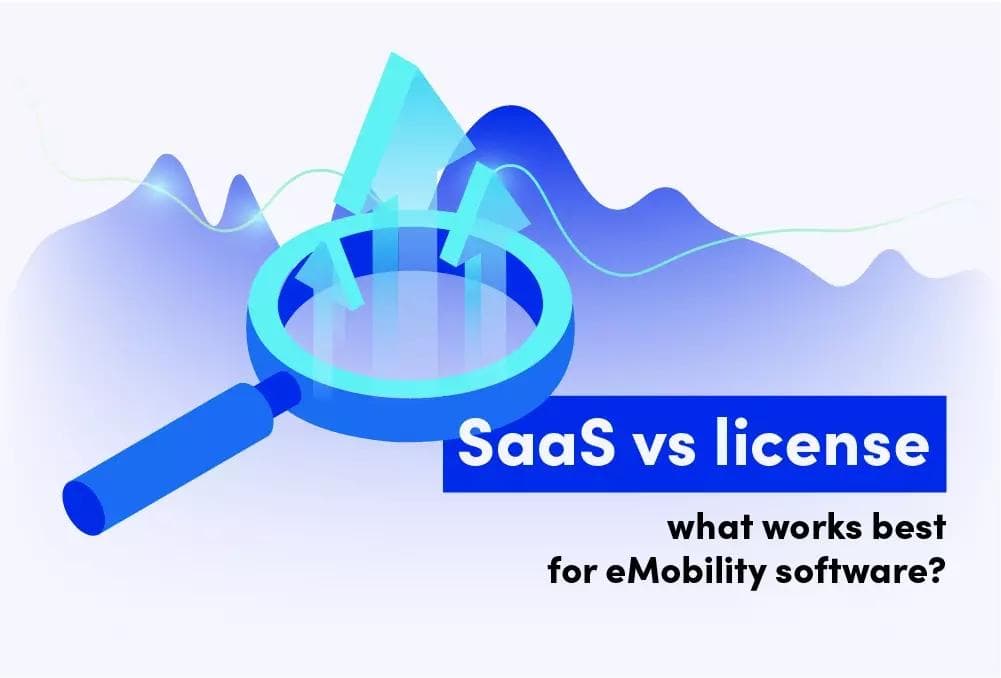Charge Point Operator platforms, eMobility Service Providers apps for end-users, Open Standards and facilitations for their integrations, eRoaming, smart charging, connected cars and the list that goes on - software solutions have solidified their place in the eMobility ecosystem, and they’re now making up for a huge part of its proper functioning.
While an ordinary EV driver may not be aware of the amount of software running in the background and facilitating the whole electric car experience, it’s a case well-known to any eMobility operator, of which a great majority came across a rather difficult task of choosing the right digital products at some point.
There is a fair share of such on the market, and quite a few available as ready-made products already. Many of them remain very similar in terms of the integrated functionalities and features. This includes open standards facilitations, user management, remote start/stop features, etc. While it’s fantastic to see the technology growth behind the industry, an operator choosing the right software must take into account a broader range of needs than just great software. Here’s where the situation may get tricky for some of them. Existing solutions are usually offered via strict purchase patterns, which often start and end at SaaS (aka Software as a Service).
Much like in any other situation, SaaS has strong benefits for some of those operating in the eMobility ecosystem, yet it’s not a one-size-fits-all solution. In order to see why, we’ll elaborate a bit on both.
SaaS - what is it?
Software as a Service (SaaS) is a way of delivering software applications to customers over the Internet. Instead of buying and installing software on their computers, customers access the application through a web browser or mobile app. They can then share data and collaborate with other users in real-time. SaaS eliminates the need for expensive hardware and software licenses, meaning businesses save money and time on IT (at least when it comes to the upfront costs). With SaaS, users can access their applications anywhere and anytime, giving them flexibility and control over their data. Additionally, maintenance and upgrades are handled by the provider, so users don’t have to worry about keeping their systems up-to-date.
There is however a major drawback of SaaS. Namely, the costs often increase as the business expands, which can make scaling a costly venture.
With that, for small business owners, SaaS can be an invaluable tool for streamlining business processes and increasing productivity, all without breaking the bank. By eliminating costly investments in hardware and software, businesses save money while still getting access to all the features they need.
License - what is it?
Unlike SaaS, a software license is a traditional way of purchasing and using software. With this approach, businesses buy a specific number of licenses for the software they need and install it on their systems.
The advantages of this approach are many. First and foremost, businesses don’t have to pay ongoing fees for the application. They’re also able to customize their software as needed, and they can use the licenses for any number of users.
The main disadvantage of a license is that (sometimes) businesses have to take care of maintenance and upgrades themselves. Additionally, since businesses must pay upfront for the licenses, it can be more expensive to start with than using SaaS.
The biggest difference between SaaS and software licensing is the cost structure and ownership. With SaaS, businesses pay a monthly or annual fee to access the application. With a software license, businesses purchase a one-time license for the number of users they need and own it outright.
Another difference lies in who is responsible for maintenance and upgrades. With SaaS, the provider is responsible for keeping the software up-to-date. With a license, companies must take care of maintenance and upgrades themselves (it must be noted here that there are however licensed solutions offering the updates).
We have covered a lot more on a similar topic in our article On-premise vs Cloud computing - check it out to learn more in greater detail.
Our response to the dilemma
Having worked with all kinds of CPOs out there, whether small or big, we’ve noticed that said differences can directly affect the businesses depending on their scale or future goals. We have also noted that EV charging software is usually available only via SaaS, which in this particular case results in higher prices as the charging stations are added. In simple terms, the more the charging network grows, the more the monthly fee is bound to increase. While it may not be an obstacle for small operators with no views of significant growth, the case gets slightly difficult for those who operate numerous sockets.
Given the rapid pace of growth within the eMobility industry and the fact that more and more CPOs are entering the market, at Solidstudio, we strongly believe that the freedom of choice is required when picking the business model of the software, so that all can have a cost-effective and optimal solution.
Knowing this and knowing the nuances behind the software purchase models, we decided to make our products available via either SaaS or license, and even more… Namely, we give the flexibility to change the model once either becomes more efficient. That way, one can start with SaaS and then move to a license once the number of charging stations under control becomes more expensive to be held under SaaS than it would be with license. With that approach, we made sure that our digital products are serving equally well for every client.
Since the two concepts of purchasing software may get a bit complicated and unclear at first, we thought it would be best if anyone could compare the specific prices and see the numbers for themselves.
With that in mind, we made available an online tool allowing for exactly that.
The CPO pricing calculator compares any costs you choose with what it looks like with us. You can enter whichever amount of charging stations you like (the more stations, the more you save). We also elaborate on some more details in terms of the benefits and drawbacks of each business model.

